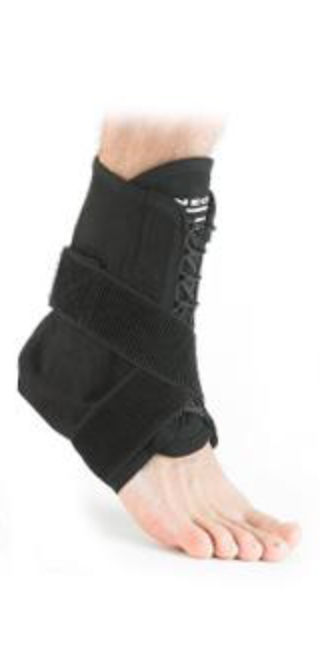What is Lateral Ligament Instability?
Ankle sprains are one of the most common sporting injuries.
Most commonly the ankle rolls inwards unexpectedly, inverts and the Anterior talo-fibular ligament, ATFL, tears. In more severe injures the Calcaneo Fibular ligament also tears. There can sometimes also be an injury to the ankle cartilage lining, termed and Osteo-Chondral defect.
Usually the injury recovers with suitable rest and physiotherapy, due to a combination of muscular compensation and strengthening, and the ligament healing.
Ankle instability is when the ankle repeatedly gives way during sporting or daily activities. This leads to recurrent ankle sprains, joint pain, swelling, inflammation, and further damage to the ligaments around the ankle.
Some people experience instability with minimal pain, whilst others feel that their ankle aches more often. Recurrent instability episodes can cause damage to the joint surface cartilage, the formation of bony spurs and arthritis.

Treatment options range from non-operative to operative.
NON-OPERATIVE MANAGEMENT
The majority of Ankle sprains settle with conservative treatment, including rest, bracing and strengthening.
Functional Rehabilitation
The first line of treatment for ankle sprains is rest, ice, compression, elevation with painkillers and anti-inflammatories (if tolerated). A camboot or brace may help initially. Physiotherapy is then useful to strengthen the peroneal and calf muscles which help stability and regain range of movement, strength, balance and joint position sense (proprioception). An ankle brace may be useful for people who have tried all these measures and experience ongoing problems with sporting or daily activities. Occasionally a steroid injection may decrease ankle inflammation and help settle symptoms so that physiotherapy can continue.
OPERATIVE MANAGEMENT
Up to 20% of patients can continue with symptoms despite physiotherapy. An MRI scan is helpful to confirm the ligament injury, and also check for injury to the cartilage lining the joint.
When non-operative measures fail, and recurrent ankle instability becomes an ongoing problem, surgery is indicated. The goal of the surgery is to repair and reinforce the ligaments combined with an early recovery program with range and strengthening.
